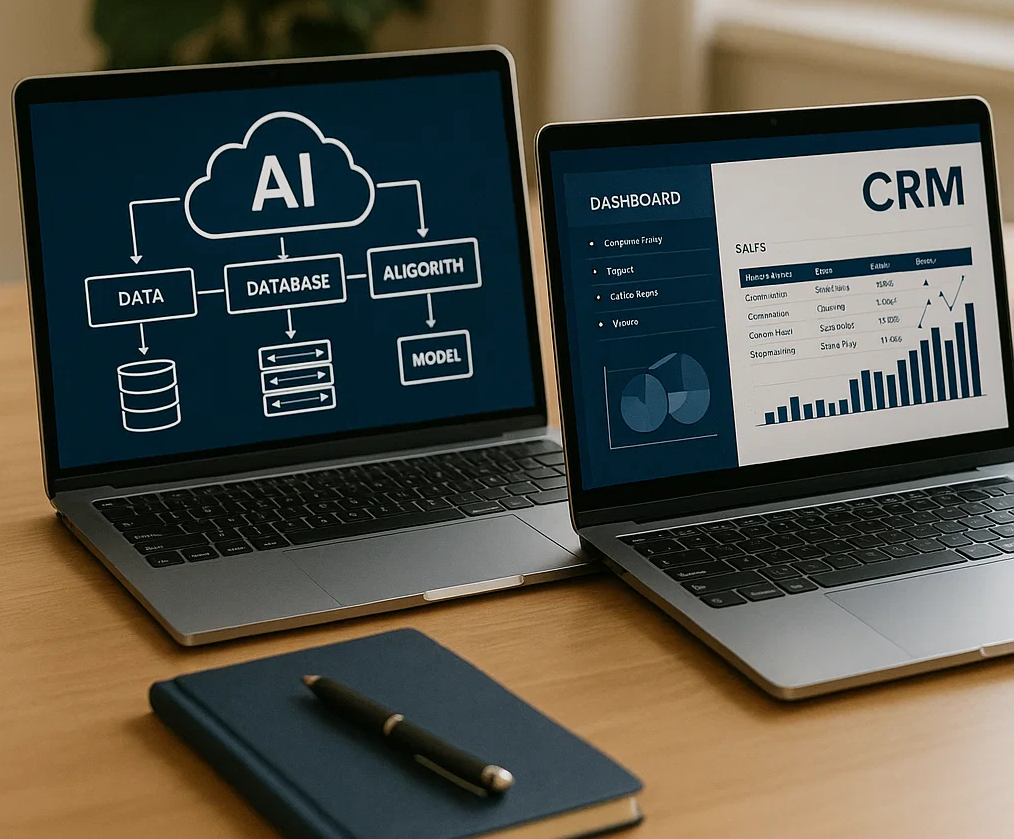Why Transforming Current Systems is the Biggest Business Opportunity of the Decade
The technology sector is at a turning point similar to the internet revolution of the early 2000s. For entrepreneurs looking to build strong, fast-growing companies, moving current IT systems to AI-based platforms is a market opportunity that will define the next wave of business software.
According to McKinsey’s 2024 Global Survey, 56% of organizations are already using artificial intelligence in at least one business function. However, this is just the early stage of a major structural change. The global AI software market is heading toward $1.8 trillion by 2030, growing at 37% per year.
Large companies have sophisticated, connected systems with complex database infrastructure that create significant value, but they’re not taking advantage of what AI can do in this area. These organizations face an unavoidable transformation, but they lack the knowledge needed to handle complex technology migrations while keeping their operations running smoothly.
The strategic opportunity isn’t in building AI from scratch, but in smartly transforming existing corporate systems. Every medium and large organization needs AI integration, creating an addressable market worth hundreds of billions of dollars globally.

Historical Parallel: The Mianframe-to-Web Migration
The most instructive historical example comes from the mainframe-to-web migration cycle (browser as interface) of the early 2000s. Companies with solid mainframe-based systems faced a major architectural shift as internet technologies matured. Specialized consulting firms that mastered both older architectures and new web technologies achieved high revenues and lasting growth throughout the entire transformation period.
Today’s AI migration opportunity follows the same pattern. Older web-based systems need transformation to AI-first architectures, creating demand for specialists who understand traditional corporate software along with the complexity of AI implementation.
Beyond Prompt Engineering: Architectural AI Integration
The core value proposition goes beyond simple AI integration or chatbot deployment. Sophisticated AI implementation requires designing smart layers that handle advanced data analysis, predictive business logic, natural language interfaces, and autonomous process management within existing corporate structures.
Market differentiation comes from the ability to redesign corporate systems where AI functions as core infrastructure, not a peripheral add-on. This approach requires vision that goes beyond current technical limitations toward transformational business possibilities.
Market Dynamics and Pricing Power
Upwork research shows a 323% increase in demand for AI specialists in 2024, while AI engineer salaries range from $180,000 to $300,000 annually in US markets. PwC analysis predicts an average 35% increase in AI investments among enterprises in 2025, with infrastructure costs ranging from $100,000 to several million dollars annually.
The lack of qualified specialized firms in building and migrating to AI-based architecture relative to corporate demand creates favorable market conditions for new players with the right knowledge. Traditional system integrators don’t have AI specialization, while AI startups typically lack experience with corporate systems, creating opportunities for competitive positioning.
Investment Requirements and Team Structure
Corporate AI migration requires significant upfront investment but generates higher margin profiles compared to traditional software services. Personnel costs represent the main investment category, where expert-level specialists – AI architects, data engineers, and integration specialists – require high salaries but generate correspondingly high billing rates.
Traditional software consulting models emphasizing junior-level staff prove ineffective given the complexity of AI migration. The optimal initial team structure includes an AI architect responsible for system vision, a data engineer specializing in corporate data preparation, an integration specialist focused on legacy system connectivity, and a business analyst capable of translating corporate requirements into technical specifications.
Market Entry Strategy
Successful market entry depends on developing an AI ecosystem migration concept that goes beyond standard integration approaches based on API queries to available models. The key element is creating a proprietary methodology that combines AI with existing corporate data through gradual replacement of traditional business logic with an intelligent decision layer along with specific model training for the business area.
Developing unique technological solutions that allow safe migration of system logic to an AI environment represents a fundamental competitive advantage. The methodology should include phased transition, where AI gradually takes over analytical and decision-making functions while maintaining data integrity and business process continuity.
Partnership strategy focuses on collaboration with companies providing specific business solutions that lack the potential for independent entry into the AI space. Such partnerships provide access to a customer base already using systems requiring modernization while eliminating direct competition in the AI transformation segment. Cooperation with ERP, CRM, or accounting system software providers creates natural distribution channels for migration services.
The Need for Transformation
The corporate software landscape is approaching a fundamental transformation comparable to previous technological turning points that created significant business opportunities. Current market conditions create an optimal space for new market participants with appropriate knowledge and vision.
The market entry window remains open but will narrow as demand attracts additional competitors and corporate clients develop internal capabilities. Early market participants establishing strong client relationships and proven methodologies will capture disproportionate market share and pricing premiums throughout the transformation cycle.
References
- [1] McKinsey Global Survey on AI: https://www.mckinsey.com/capabilities/quantumblack/our-insights/the-state-of-ai
- [2] AI Software Market Analysis: https://www.grandviewresearch.com/industry-analysis/artificial-intelligence-ai-market
- [3] GitHub AI Development Report: https://github.blog/2024-06-13-survey-reveals-ais-impact-on-the-developer-experience/
- [4] Stack Overflow Developer Survey: https://survey.stackoverflow.co/2024/ai
- [5] Upwork AI Skills Report: https://www.upwork.com/research/future-workforce-report-ai
- [6] AI Engineer Salary Data: https://www.glassdoor.com/Salaries/ai-engineer-salary-SRCH_KO0,11.htm
- [7] PwC AI Investment Survey: https://www.pwc.com/us/en/tech-effect/ai-analytics/ai-predictions.html
- [8] Enterprise AI Infrastructure Costs: https://www.mckinsey.com/capabilities/mckinsey-digital/our-insights/the-economic-potential-of-generative-ai-the-next-productivity-frontier
